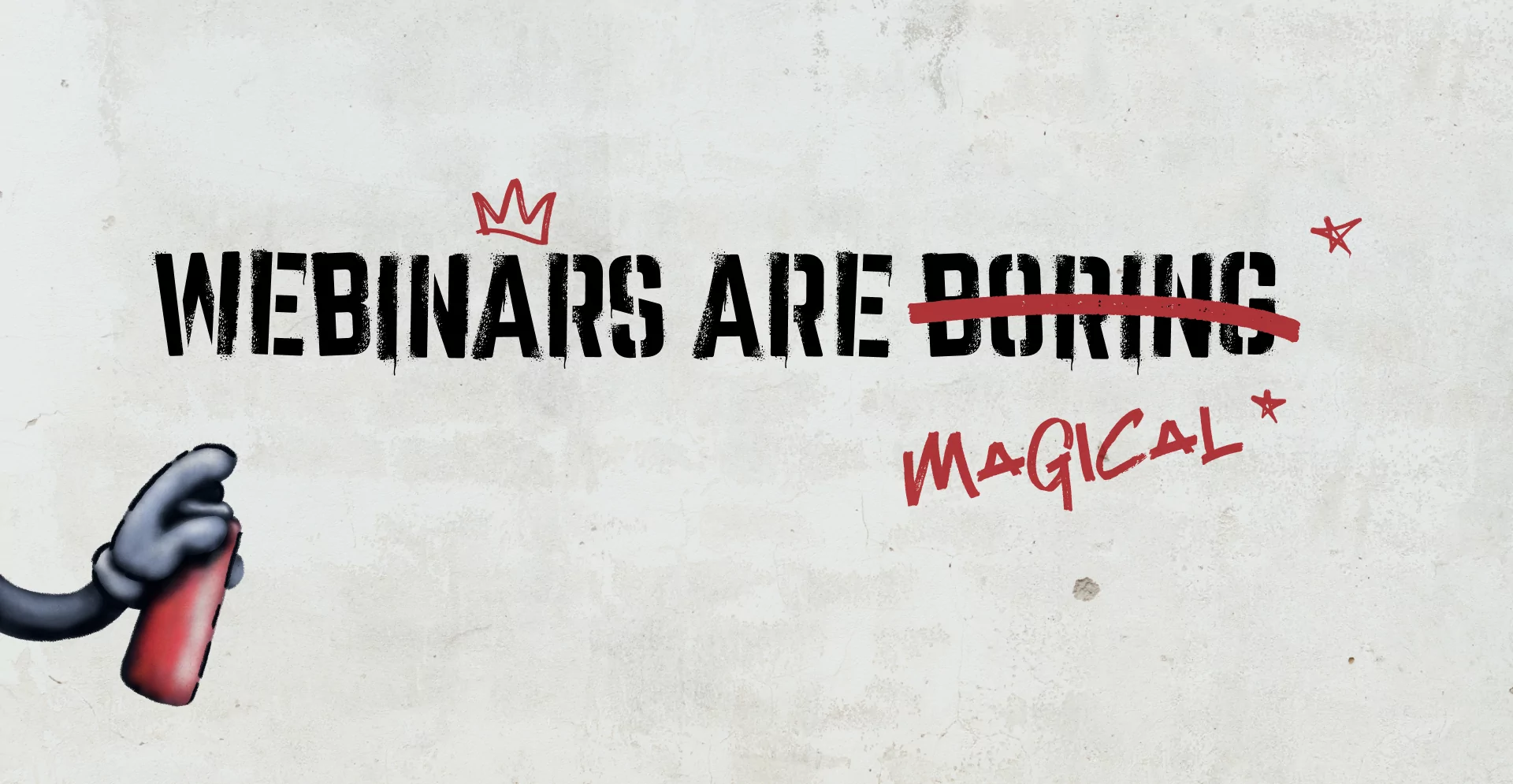What Makes a Work Meeting Feel More like “Television”?
How can a town hall meeting, sales kick-off, product launch, panel discussion, or webinar feel more like television?
Let’s take a moment to think about how we consume content outside of work. We watch Netflix, maybe even binge it. We’re on YouTube, Instagram, Facebook, perhaps TikTok—or we know people who are.
Furthermore, we watch short, digestible segments; segments that are engaging because they tell us a story.
There’s the magic word: Story, story, story.
Incorporate Storytelling
Stories make us feel. Throughout history, stories have been a tool for human connection, for building relationships, community, and culture.
We think work should, and can, feel like what we consume everywhere else in our lives. But how can we make a work meeting feel more like a story—more like watching television—and also build it for screens?
The Formula
There’s a formula. Think back to the stories on Netflix, Hulu, Instagram, YouTube. That content tends to have at least a few of the following characteristics that keep you watching:
- Shorter.
- High energy; surprising.
- The strategic use of, color, music, and humor.
- Memorable.
- Tells a story through compelling characters, scenes, and themes.
Does any of that sound like a Zoom meeting? Nope.
A story is characterized not only by the list above but by this: it has a beginning, middle, and end; discrete segments. Thinking about your next meeting in terms of thoughtful and well-designed segments is key to creating content that’s more similar to what people consume in their daily lives.
The Positive Impact of the “Storytelling-Through-Segments” Model
We’ve seen the impact of meetings that follow the “storytelling-through-segments” model:
- Increased attendance.
- Higher engagement.
- Viewers after the fact (on-demand).
- Teams of people who are energized and aligned.
Learn more about how to quickly start incorporating “segments and bits” into your next meeting here.
How Companies Use Storytelling to Capture Audience Attention
There are more real-world examples of how companies use storytelling to capture their most important audience’s attention by making them “part of the story being told in real-time.”
- Take the “In-flight safety” talk on every plane. No one pays attention to the in-person flight attendant demonstrating safety features. So, Virgin America created a stylized video with segments and scenes, memorable hip hop and pop tunes, actors, humor — and they put it on a small screen in front of your nose. Result: people love it. They pay attention to the in-flight safety talk now.
- Consider large sporting events. Between play, NBA games have a few minutes to engage the crowd. They might do a free-throw competition with a prize, race RC cars across the floor, shoot t-shirts into the crowd, or feature a proposal on the Jumbotron.Why? They’re bringing their audience into the story being told on the court. The guest are engaged because they’re “part of the game” now.
- Superbowl commercials. Notice how much energy, as well as memorable, sometimes humorous content is packed into those very short segments!
How can you make your audience a part of your story in work meetings? Read on to learn.































